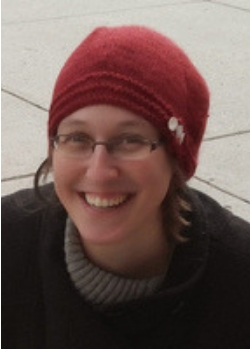Motl, the Cantor’s Son, was Sholem Aleichem’s last literary creation; the unfinished two-volume collection of stories about the character begins with his shtetl boyhood and tells the story of his coming to America. It is a symbolic journey depicting the changes experienced by a generation of Eastern European Jews, and by the author himself in later life. In order to represent the break with tradition that Motl encounters in New York City, Sholem Aleichem makes him an aspiring artist, a salient detail highlighted by Dan Miron, a preeminent scholar of modern Jewish literature. Why an artist? Because, having emerged from the ghettos of Europe, Jews are liberated to rediscover the fine arts—previously forbidden, or at least frowned upon, by the traditional perception that creating likenesses of humans was a violation of the second commandments.
In Ki Tissa, however, we discover a resounding affirmation of the power and significance of art at the very foundation of Jewish culture. Before Moses ascends to Sinai, before the painful incident of the golden calf and the breaking of the tablets, the parashah includes the nomination of Betzalel—for whom the prestigious academy of the arts in Jerusalem is named—as the master craftsman responsible for fabricating the Mishkan. In fact, as Kalman Bland argues in a book devoted to the subject, The Artless Jew, the prohibition of figurative art in Judaism is more perception than reality, and a modern perception at that, unknown to most Jews throughout our history.
Abraham Ibn Ezra, in a fascinating comment on this verse, provides a theory about the types of intellection marshalled by Betzalel to attain his task. Referring to the Torah’s description of Betzalel in Ex. 31:3, I have endowed him with a divine spirit of skill, ability, and knowledge in every kind of craft, Ibn Ezra comments: “Endowed him, just as Joshua bin Nun was endowed with a divine spirit (in Deut. 24:9), as it says, a divine spirit rested upon him (in Isa. 11:2). The meaning of divine spirit is a spirit of wisdom and insight (as it says in the aforementioned verse from Isaiah).” So far, this interpretation is standard fare for Ibn Ezra; he notices that the description of Betzalel is like the (chronologically later) description of Joshua. Building upon that observation, Ibn Ezra further notes a verse in Isaiah, which can help, clarify what divine spirit means in reference to Betzalel’s abilities, too.
Ibn Ezra continues: “And skill refers to those forms that emerge in the back ventricle of the brain in the head, while the words ability and knowledge derive from the same root meaning between, which occurs in the ventricle between ability and knowledge, given that ability is situated in the rear ventricle between the ventricles of ability and knowledge, while knowledge is connected through conduits in the brain to the forehead by means of the senses.” Here, Ibn Ezra applies scientific theories he knew in order to explicate the text. Specifically, he seems to be influenced by the harmonization of two respected understandings of human cognition from antiquity, those of Aristotle, who considered the heart to be the seat of the intellect, and those of Galen, who believed the brain to be the center of cognition and divided it into the three ventricles mentioned by Ibn Ezra. Ibn Sinna (Avicenna) synthesized these two contradictory theories in a widely read medical encyclopedia, with which Ibn Ezra was familiar. In this instance, Ibn Ezra utilizes Ibn Sinna’s synthesis to explain the precise words used to describe Betzalel’s artistic abilities. For Ibn Ezra, artistic insight and the skill of the artisan is a central part of the higher cognitive processes. Interestingly, Ibn Ezra seems to have developed this idea between the writing of his first, shorter commentary and his alternative, longer commentary; in the earlier comment, he only remarks, “he [Betzalel] was highly intelligent, knowing every difficult secret, because it is unacceptable for one to perform the work of the holy of holies unless that person is filled with wisdom.”
Returning for a moment to Motl, we find that, traditionally or not, by modernity, art was conceived as being of lesser importance to Judaism, as reflected in Sholem Aleichem’s writing. Ki Tissa—as understood by the commentators—returns art to its central place in Jewish expression.


 Download PDF
Download PDF